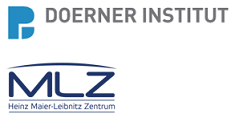Speaker
Description
The metallurgical investigations of medieval armours are of great interest the history of techniques [1]. Studying the nature and microstructure of the alloys provides crucial insights into the manufacturing processes used by the armourers. Indeed, the nature and heat treatment of the metal play a key role on its mechanical properties, and thus on the effectiveness of an armour. This approach has already brought new perspectives in the study of medieval armaments. However, metallographic studies require to invasively collect samples, which is rarely allowed on museum artefacts. Moreover, it only provides localized information that could be not representative of the whole armour which microstructure can be heterogenous.
For this reason, non-invasive approaches have been developed. X-ray diffraction (XRD) using Synchrotron Radiation (SR) is a well-suited tool to identify and quantify mineral phases, commonly found in ancient ferrous alloys, like cementite, ferrite and martensite [2]. The high flux, the good collimation and monochromaticity of the photon beam favors the detection of minor phases with low volume fraction (such as cementite) and can provide information on residual strain and texture. Combined with the fast diffractograms acquisition, it allows to multiply the analysis over extended regions of the samples to assess the heterogeneity of the metal on large museum artefact.
The aim of the present study is to set up a specific experimental approach for the analysis of museum armour. It has involved, in a first step, the fabrication and characterization of Fe-C model alloys at targeted carbon concentration ([C] < 0.8 wt%) and typical of microstructure found in ancient ferrous alloys such as perlite, ferrite, martensite and bainite. Thermal treatment including different cooling rates and monitored by quenching dilatometry were applied to the alloys to obtain the desired microstructure. Then, of characterization techniques (Optical Microscopy, Backscattering electron (BSE) imaging using the scanning electron microscope (SEM) and microhardness measurements) was carried out to identify and attest the obtained microstructure.
SR-XRD measurements were carried out at the DiffAbs and PUMA beamline (SOLEIL Synchrotron) on the model alloys at different energies to assess the in-depth heterogeneity of the metal, depending on the microstructure. The measurements made on the model samples were then used to select the best operating condition to perform SR-XRD analysis on complete piece of armour. In parlicular, these measurements concern an Armour made by Valentin Siebenbürger's workshop. This armour belongs to the “Musée des Beaux Arts de Rennes” (Rennes, France, Inv. n° 1096/4850 et 4851 DEP) and is currently on display at the “Musée de l’Armée” (Paris, France).
The data collected on the model alloys and late medieval European armour preserved at the Musée de l'Armée (Paris, France) will contribute to the elaboration of a reference table on the ferrous alloys used in the field of medieval armament but also for other ancient ferrous artefacts. This will bring new insights on the technical gestures and manufacturing processes and will pave the way for large-scale interdisciplinary in this field.
[1] E. Bérard and al., Journal of Cultural Heritage 53, 2022, 88-99.
[2] E. Bérard and al., The European Physical Journal Plus, 2023, 138 (4), 311.
[3] K. Desjardins and al., Journal of Synchrotron Radiation, 1 (29), 2022, 180-193.

